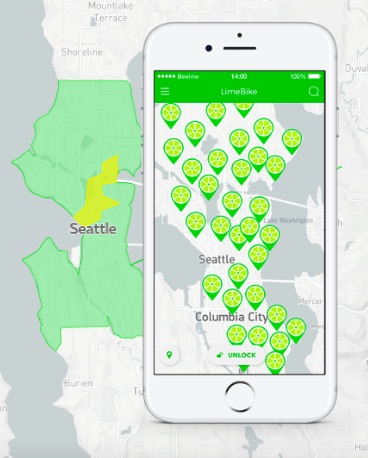Getting around without a car can be difficult. I would know, as my family finally tossed out the keys to our cars six months ago. For me, a combination of rideshare, public transit and a walkable city enabled this transition, but like many people, I still find there’s a gap when rideshare isn’t affordable, transit isn’t available, and walking isn’t practical.
While I am one of many who choose to ditch the expenses and hassle of car ownership, there are plenty of folks who simply don’t have a choice. Depending on where they live, this can be a hardship that doubles or triples commute times, leaves them stranded late at night, or limits their ability to access critical services and work regularly.
These dilemmas are far from over, but change is in motion. Ridesharing created a whole new transportation category, making a car (and sometimes a new friend!) accessible at the tap of your finger. But with congestion rising in many city centers, there’s a growing need for door-to-door mobility options that don’t contribute to traffic. Shared micro-mobility is proving well-suited to solve for the “first and last mile” problem so many face. Shared dockless bikes, e-bikes and e-scooters s are subsidy-free, carbon neutral, and made for the bike lane. The early evidence shows that it’s working: 27% of Lime riders in a recent survey of our 5 biggest urban markets said they used Lime to connect to public transit on their last trip.
Just last month, Lime surpassed 10 million total rides in the same amount of time it took Lyft to reach its first 1 million. The driving factors behind such remarkable growth are simple: demand and affordability. In the U.S., almost 60% of all car trips are less than 5 miles long, which means micro-mobility has the potential to replace a huge fraction of the vehicle miles traveled on our roads each year.
So how can cities make the most of micro-mobility’s potential? To have the greatest positive impact, bikes, e-bikes and scooters must be easy to locate, unlock, ride and rent. A city’s decision for how to roll out the fleet determines who has access to the devices and when. With the right policy in place, officials can support a dramatic shift in consumer behavior from cars to more equitable, sustainable modes.

In our work with cities across the country, we’ve found that the best way to ensure a strong network in all neighborhoods is to launch with no fixed maximum fleet size, allowing micro-mobility to grow with demand demonstrated by the utilization data operators share. In San Diego, for example, a city that has embraced dockless bikes and scooters, we’re able to serve the entire community, providing access to new mobility options in all corners of the city.
Transparent data sharing is vital to building a trusted relationship between cities and operators. Lime has embraced this responsibility by committing to sharing data transparently in all the cities where we operate, and supporting the Mobility Data Specification format developed by the Los Angeles Department of Transportation LA DOT led the way by developing this groundbreaking standard, which we are already actively using in several cities and hope the whole entire industry adopts.
While transparency can empower cities to measure and shape micro-mobility services in their communities, micro-mobility companies also need to prioritize affordability to ensure everyone can access them. The LimeAccess program was created with this value in mind. By simply demonstrating eligibility in any state or federally run assistance program for disadvantaged communities, users can receive a 95% discount on all Lime pedal bike rides and a 50% discount on all Lime-E and Lime-S rides. You can even pay using cash at any PayNearMe location, an option for those without a credit card or bank account, and our text-to-unlock feature means riders don’t need a smartphone to unlock a bike or scooter either.
I believe it’s possible to build a future where car ownership is obsolete, traffic congestion fades away, mobility is carbon-free, and everyone, no matter their income, can get around conveniently and safely — but that future is not guaranteed. We have the choice to step up and make it happen, or fall back on cars as the only way. Micro-mobility offers a vision of the future that puts people first.
© CoMotion LA │ Powering a Sustainable Multimodal Future for All
Sign up for CoMotion NEWS, our must-read weekly newsletter that contains the most critical mobility news of the week, updates about: CoMotion events, the Fast Forward Podcast and more!